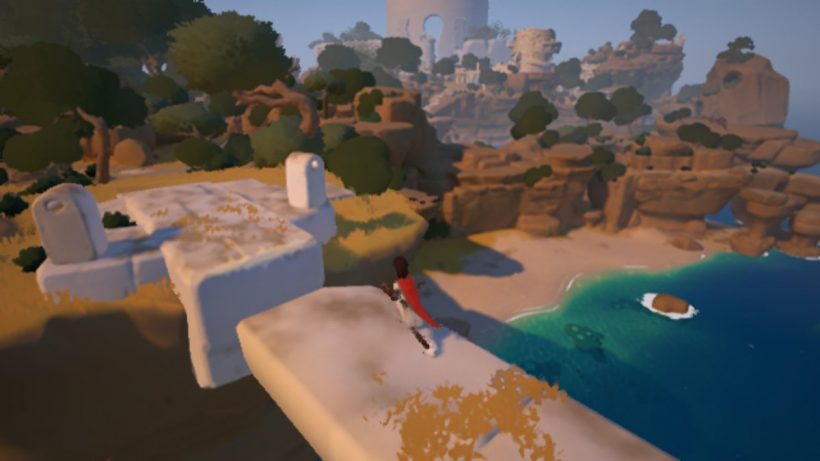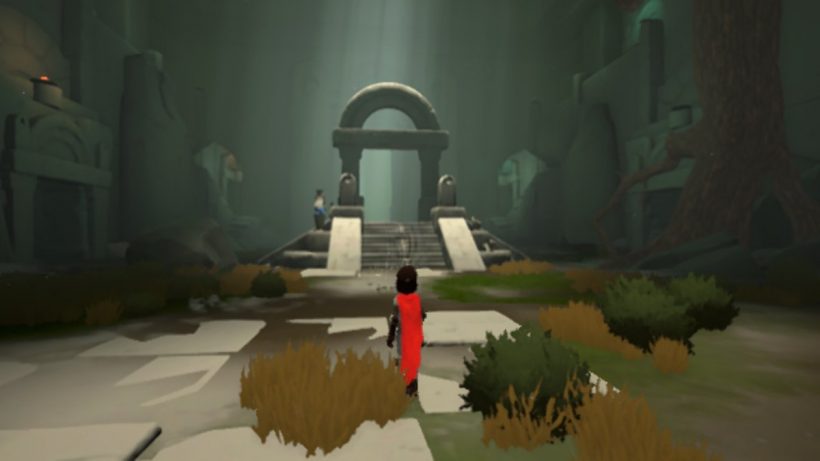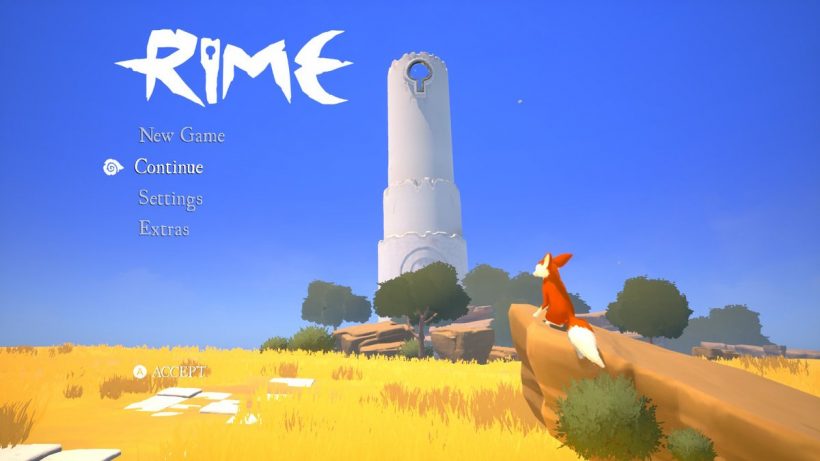Through hardships to the stars.
Rime is one of those infamous video games that is perhaps more well known for its turbulent development than the experience itself. For a long while, the game was scheduled to be one of Sony’s exclusive titles on the PlayStation 4. Straight from the start, its tone and gameplay brought comparisons of title’s such as Ico, Journey and The Legend of Zelda: The Wind Waker, bringing with it an unprecedented level of expectation. Developer Tequila Games wanted to deliver on this lofty goal, and so made the title multi-platform. This decision, however, didn’t sit well with gamers, who were quick to assume that the game being dropped from PS4 exclusivity meant that its quality was not up to scratch.
The reality is somewhere in the middle. Rime is absolutely not the disaster that many gamers were predicting at one point, but it also fails to meet the high expectations the developer was so clearly striving to meet thanks to some truly unacceptable technical issues.

Rime kicks off in fairly typical fashion for a game of its nature. You awaken on the beach of a gorgeous, exotic island with no context or explanation of why you’re there or where you need to go. In terms of pure design, the game looks and sounds wonderful – waves gently crash against the rocks, and seagulls squark as they fly about the island. You’re also treated to a lovely day and night cycle as you explore, with the stars lighting up the night sky and the sunrise displaying beautiful burnt orange colours. Unfortunately, if you’re playing in handheld mode, much of this is going to be wasted on you. The game looks utterly atrocious on the portable screen, with scenery and characters blurred and washed out, the colours dulled and textures completely lost on the smaller screen. This is heartbreaking considering I tend to play my Switch almost exclusively in handheld mode, and I know many other folks do, too. Going from games like Super Mario Odyssey and Stardew Valley – where the colours really pop on the Switch’s screen – Rime is a bit of an eyesore.
Not only this, Rime also subjects you to some of the most choppy frame-rate I’ve ever experienced in a game – whether playing in handheld mode or docked. It tries to level out at a steady 30FPS for the most part, but then also struggles around almost every corner, with frame-rate dips so severe that they actually impact the core gameplay. There were multiple occasions where I’d attempt to jump across a ledge, only for the game to abruptly chug along for a few seconds, causing me to completely miss my mark and plummet to the waters below. I know the game does has frame-rate issues on other platforms, but after a bit of research, it seems the issue is far more prevalent on the Switch.

It’s such a shame that these technical problems are so front and centre, because buried beneath them is a game that is genuinely worth the experience. Much like that other open-world adventure earlier this year on the Switch (you know… that one..!), there is very little handholding in Rime. It encourages you to go off the beaten path to see what you can find, and more often than not there will be a hidden cave or a collectable item for you to pick up. The environments aren’t quite as open as you might initially think though – your character can only jump and hike so far, with the game taking cues from the Uncharted series by placing obviously climbable ledges in easy-to-reach spots.
Similarly, the puzzles are not very ambitious for the most part, but they are reasonably engaging. Throughout the game, you’ll be hitting the X button to emit a shout, thus causing the objects around you to shift or change according to the puzzle (and if you’re not in the vicinity of any objects, a tap of the same button will simply cause your character to hum a brief tune). A mixture of shouting and moving blocks around is pretty much the extent of what you’ll need to do in Rime, which is unfortunate as I would have enjoyed something a bit more taxing. Then again, I feel like the developer wants you to focus more on the sights and sounds as you progress – which, again, is why the technical problems are so frustrating.

Is there a patch coming to fix Rime’s problems? I don’t know, but I sincerely hope so. If you must pick it up on day one, then you should absolutely stick to playing it in the docked TV mode, if you can. Otherwise, I’d wait and see if an update comes to fix its glaring issues. Nevertheless, it’s an adventure I do recommend you experience at some point – it’s a well-designed game boasting some lovely art design, moving music and a genuinely revelatory ending, and whilst it will likely only last you around 4-5 hours, I feel making it a longer experience would be doing it a disservice. It could be a classic, but sadly, right now, it’s all bogged down and buried beneath technical flaws that – in this day and age – are simply inexcusable.
RiME
Summary
Rime is one of those games that has all the potential to be one of the all-time greats, but falls short at the last hurdle. Choppy framerate and poor visuals in handheld mode hold it back from being a day one recommendation, but it’s also an adventure that, one day – despite the flaws – you’ll be glad to take.

